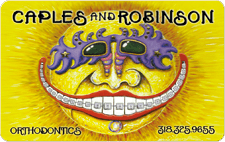
Headgear is used to change the way teeth come together, and in younger patients, to guide the growth of the jaw.
What Are The Different Types of Headgear?
Orthodontic headgear generally combines a series of straps and elastic bands on the outside of the head that attach to braces inside the mouth. Some headgear may incorporate head caps for anchorage or hook directly onto the teeth.
Headgear is often used for one of the following reasons:
- Cervical pull – Cervical pulls are used to correct a bad bite called an overjet, also known as a malocclusion. This occurs when the top teeth jut out over the bottom teeth. Cervical pulls use straps attached to braces to guide the upper jaw into proper alignment.
- High pull – High pulls can also be used to correct overbites, but are mainly used to correct open bites. Open bites are when there is no contact between the upper and lower teeth when the mouth is closed.
- Reverse pull – Reverse pulls are used to correct underbites, when the lower teeth jut past the top teeth. It often uses rubber bands attached to braces on the top teeth.
When Is Headgear Necessary?
While metal braces are typically used to shift teeth into proper alignment, headgear deals more directly with the alignment of the upper and lower jaws which can help enhance tooth function and facial aesthetics.
Due to innovations in orthodontics, headgear is not as commonly prescribed as it once was. If needed, headgear may be recommended for 12 to 14 hours daily over the course of 1 to 2 years.
If you have questions about orthodontic headgear, or think you may benefit from this treatment, contact our dental office in Monroe, LA today.





